第32章
Near Festival HallAt close view we found the Festival Hall more interesting than it had seemed at a distance.It unquestionably had something of the elegance associated with the best French architecture.But, unlike most of the buildings here, it did not develop out of a central idea.Much of its ornamentation seemed put on from the outside.
Of all the domes this dome impressed us as being the least interesting.
It did not even justify itself as being a means of giving abundant light."This kind of architecture doesn't really belong in this country;but it seems to be making its way.Observe the waste of space involved.
However, the curving arches on either side are rather charming.And the architect has succeeded in putting into the whole structure a certain amount of sentiment.In fact, throughout the whole Exposition you feel that the architects haven't worked merely for money or for glory.They have appreciated the chance of doing something, out of the commonplace."The sculpture by Sherry Fry was evidently executed with the idea of festivity in mind, the "Bacchus" and "The Reclining Woman" and two "Floras" decorated with flowers, and "Little Pan," and "The Torch-bearer" reproduced above each of the smaller domes.But, somehow, those figures did not quite indicate the real character of the building, intended for concerts and lectures and conventions, rather serious business.The coloring, too, of the statues, was disappointing, the dull brown being out of key with the light green of the domes.
"In the smaller concert room upstairs, Recital Hall," said the architect, "there is some very fine stained glass; two windows, and on the landing of the north stairway there's a third window, all done by the man who has been called the Burne-Jones of America, Charles J.
Connick, of Boston.Instead of being hidden away there, they ought to have been put in the Fine Arts Building.They represent something new in the way of stained glass, and they have a wonderful depth and brilliancy."As we drew near the Avenue of Progress we saw the magnificent doorway of the Varied Industries, overladen with ornamentation."It was clever of Faville to put that doorway just in this spot where it would be seen by the crowds that entered by Fillmore Street.It comes from the Santa Cruz Hospital, in Toledo, Spain, built by the Spanish architect, De Egas, for Cardinal Mendoza, one of the most famous portals in Europe.The adaptation has been wonderfully done by Ralph Stackpole, with those figures of the American workman carrying a pick at either side and the semicircular panel just above the door and the group on top.That panel is one of the finest pieces of sculpture in the Exposition.It has tenderness and reverence.It's the kind of thing the mediaeval sculptors who worked on religious themes would have been enthusiastic over.See how simple it is, just a group of workers, with the emblems of their work, the women spinning with the lamb close by, the artist and the artisan, and the woman with the design of a vessel's prow in her hands, suggesting commerce.The single figure in the center is the intelligent workman who works with his hands and knows how to work, too.The group on top is a very pretty conception, the Old World Handing Its Burden to the Younger World, with its suggestions of the European people coming over here and raising American children."